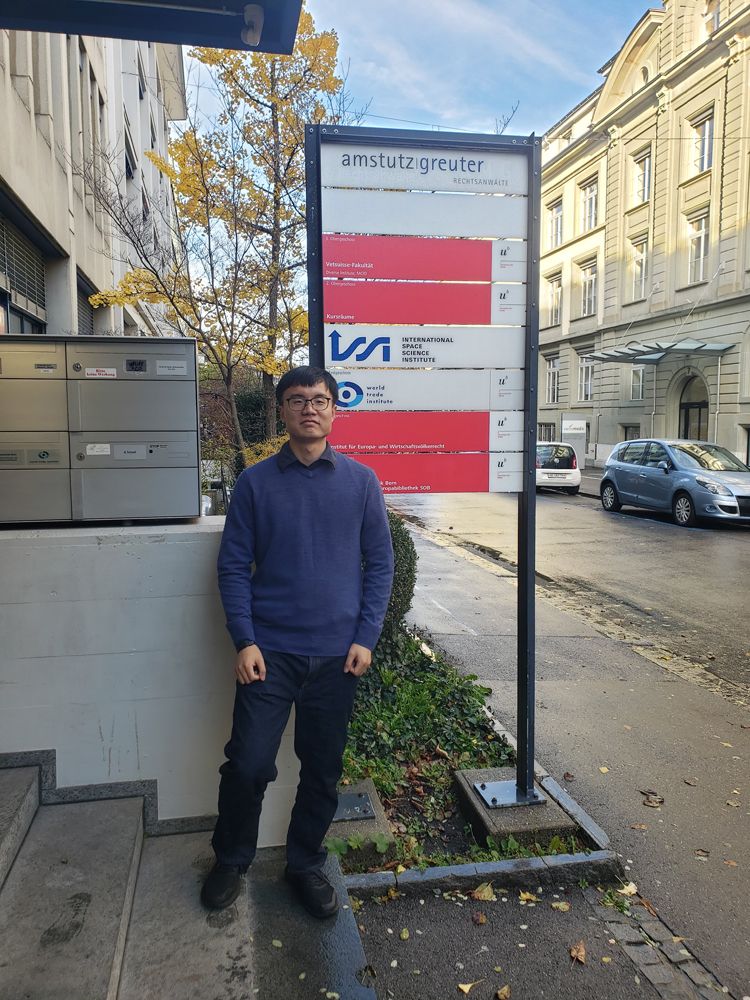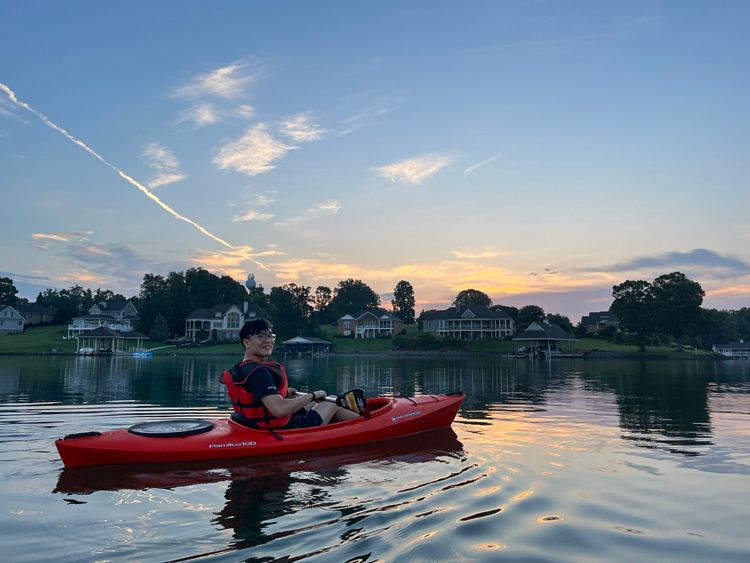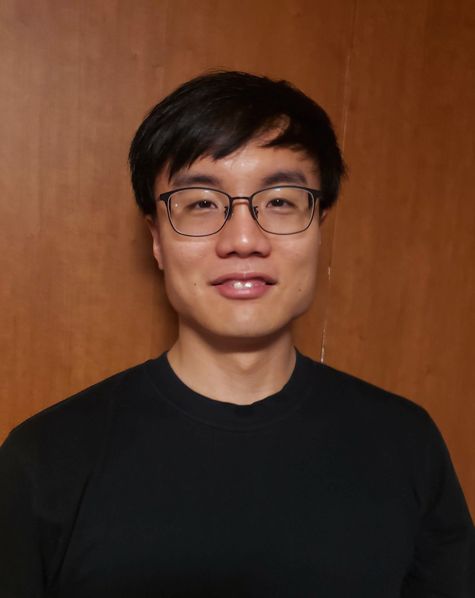Early Career Scientist Spotlight
Dr. Jaewoong Jung (he/him/his)
Space Physicist
Geospace Physics Laboratory (673)
Did you always know that you wanted to be a space physicist?
No, I didn't. Initially, I was more interested in astronomy when I was undergraduate student. However, my interest shifted when I took a course in space weather and became fascinated by the interplay between the solar wind and Earth's magnetic field. The Earth's magnetic field forms a magnetopause, which acts as a boundary to repel the interplanetary magnetic field and protects us from harmful radiation from the Sun. What appealed to me was the existence of this giant magnetic structure, which wasn't made by humans. After this course, I decided to pursue my graduate degree to learn more about space physics during my PhD studies. As I learned more about space physics, I discovered that there are many different exciting areas to study within the field, and I became more absorbed in it.

Credit: Gonzalo Cucho-Padin
What science questions do you investigate?
I study the soft X-ray emissions from Earth's magnetospheric system. When highly charged solar wind particles interact with neutral particles in Earth's outer atmosphere (exosphere), they undergo charge exchange, and X-ray photons are emitted. By imaging this X-ray emission from satellites, we can instantly gather information about the distribution of solar wind plasma, allowing us to track the position of the dayside magnetopause. This movement provides valuable insight into the Sun-Earth interaction.
To investigate solar wind charge exchange, I model the exosphere. Our objective is to quantify the number of neutral particles present within the exosphere. I run simulations wherein I track particles influenced by gravitational forces from the exosphere's top to its base. By comparing these simulations with atmospheric models, I estimate the neutral density within the exosphere. Additionally, I focus on modeling the magnetosheath, a transitional region between Earth and the solar wind. Leveraging outputs from a global magnetohydrodynamic simulation model known as OpenGGCM, I've developed a simplified magnetosheath model. This model facilitates rapid estimations of solar wind charge exchange rates.
What is one research project that you are particularly excited about, and why?
One project that really excites me is the modeling of the exosphere, which I'm currently undertaking with my advisor and colleague. The exosphere is the outermost layer of Earth's atmosphere, extending from about 500 km to the Moon's orbit. Traditionally, the exosphere was considered unimportant because it primarily consists of neutral particles that were thought to be incapable of interacting with plasma. However, recent discoveries have revealed that the charge exchange between neutral particles and solar wind plasma offers a valuable method for remotely sensing solar wind plasma. Therefore, understanding the distribution of neutral particles in the exosphere has become crucial.

Credit: Woohee Choi
What is one space mission that you are particularly excited about, and why?
I'm particularly excited about the planned NASA mission, Solar-Terrestrial Observer for the Response of the Magnetosphere (STORM). While space physicists are well-versed in Earth's magnetospheric system, the visuals we typically encounter are often schematics or magnetohydrodynamic (MHD) simulations. Actual global imaging of Earth's magnetospheric system has never been accomplished. There are a few reasons for this. First, in the early decades of magnetospheric exploration, the main focus was on in-situ measurements and understanding the fundamental physics processes. Second, soft X-ray emission near Earth was only discovered in 1994, and it took a few years to find out it was caused by solar wind charge exchange. Now, with the development of soft X-ray imaging technology, STORM aims to change that by capturing images of the dayside magnetospheric system. It will achieve this by observing X-ray emissions from the magnetosheath. Through the images captured by STORM, we could test the results of MHD simulations, which will help us understand the Sun-Earth interaction better. Given that most of my research projects are centered around soft X-ray emissions from the magnetosheath, I'm very excited about the insights that STORM will provide.
What skills are most useful to you in your work, and where did you develop those skills?
The most valuable skill for me is programming. When I was young, I found coding interesting and even participated in a programming contest. However, my interest in nature outweighed my interest in coding, so I primarily studied using pencil and paper until I entered graduate school. Once I began my research, I regretted not pursuing programming more seriously earlier on. I initially started using a software called SAS (Scientific Analysis System) to analyze X-ray data, including observations of emissions from Earth’s magnetosheath. Each step needed to process the data required running numerous commands, prompting me to gradually realize the efficiency of writing code to automate these tasks. A significant portion of my Ph.D. studies was dedicated to developing coding skills in various programming languages.

Credit: Jaewoong Jung
What is one thing you wish the public understood about your field of work?
One thing I wish the public understood about my field of work is the critical role that space physicists play in safeguarding our technology-dependent society from the effects of solar activity. The sun emits a powerful stream of particles that can potentially disrupt and damage everyday machines like cell phones or computers if they reach Earth without prevention measures in place. Fortunately, Earth's magnetic field acts as a shield, deflecting these energetic particles around our planet. However, during periods of strong solar activity, large quantities of these particles can breach our magnetic defenses and enter the Earth's atmosphere.
What we, space physicists, do is crucial in this context. We study the intricate interaction between Earth's magnetic field and the sun, seeking to better understand and predict the disruptions caused by such intense solar activity. By developing models and forecasting techniques, they aim to provide early warnings and mitigation strategies to minimize the impact on our technological infrastructure. In essence, space physics is not only an important scientific discipline but also a practical one, contributing to the resilience of our modern society in the face of potential solar threats.
What is a fun fact about you?
I worked with firefighters at a fire station for two years in Korea. It wasn't really about battling intense blazes every day, as I didn't have enough training for that, and it was a rural station. However, I did assist them in fighting fires a few times and in saving people from traffic accidents. I witnessed some deaths; some of these deaths were truly unexpected and impactful, shattering families. Paramedics do their best to prevent such tragedies, but sometimes there's nothing we can do. In our modern society, we're busy managing many systems and working hard in each domain. What I learned is that sometimes life can unexpectedly turn upside down, rendering the objectives we're striving for insignificant. So, we may be wise to cherish and enjoy what we have today.
Biography
Home Town:
Wonju-si, Gangwon-do, Republic of Korea
Undergraduate Degree:
B.S. in Physics and Astronomy, Seoul National University, Seoul, Republic of Korea
Post-graduate Degrees:
Ph.D. in Physics, University of Alaska Fairbanks, Fairbanks, AK

